The global pandemic achieved something that no political movement, no world religion and no pharmaceutical product has ever achieved before: global agreement from the people of all nations, all regions and all walks of life on a single, inherent truth. The year 2020 sucked.
And yet.
There were still moments of joy and revelation, and few can match those experienced by Gustavo Cárdenas Hinojosa, a native of the Baja California Sur town of Constitución and a graduate of the Autonomous University of Baja California Sur (UABCS) in La Paz, one of the best marine sciences schools in Mexico. “My master’s degree at UABCS was on the habitat of beaked, or toothed, whales in the La Paz-Los Cabos region. This is not as easy as it sounds. While 23 species of beaked whales have been documented, they are quite rare to see and we still know very little about them. Unlike the gregarious gray and humpback whales who love to come in close to shore in Baja and spend a lot of time at the surface, beaked whales tend to live really far offshore, in very deep waters, and spend about 90% of their time foraging underwater. When they are on the surface it’s only for a few minutes. All this combines to make them extremely difficult to study.”

Photo by Simon Ager of the Sea Shepherd Conservation Society
In fact, the only reason scientists know about one species of beaked whale, Perrin’s beaked whale or Mesoplodon perrinni, is that several dead ones washed up on a beach in the US state of California. They were initially identified as Hector’s beaked whales or Mesoplodon hectori, and only genetic testing proved that they were an entirely new species previously unknown to man. They had never been seen in the wild. They had never been definitively heard either. One of the defining characteristics of beaked whales is that they communicate and hunt via echolocation clicks that are above the frequency of human hearing, and Perrin’s beaked whales are thought to produce a species-specific FM echolocation pulse of BW43. In 2013 BW43 pulses were recorded off the coast of Southern California, but in 2018 Gustavo’s colleagues recorded BW43 pulses from the US-Mexico border south to the mid part of the Baja Peninsula. They had no DNA or visual proof, but they thought this area might overlap with the limited geographic range of Perrin’s beaked whale. Had they stumbled upon the Mesoplodon perrinni in the wilds of Baja’s waters?
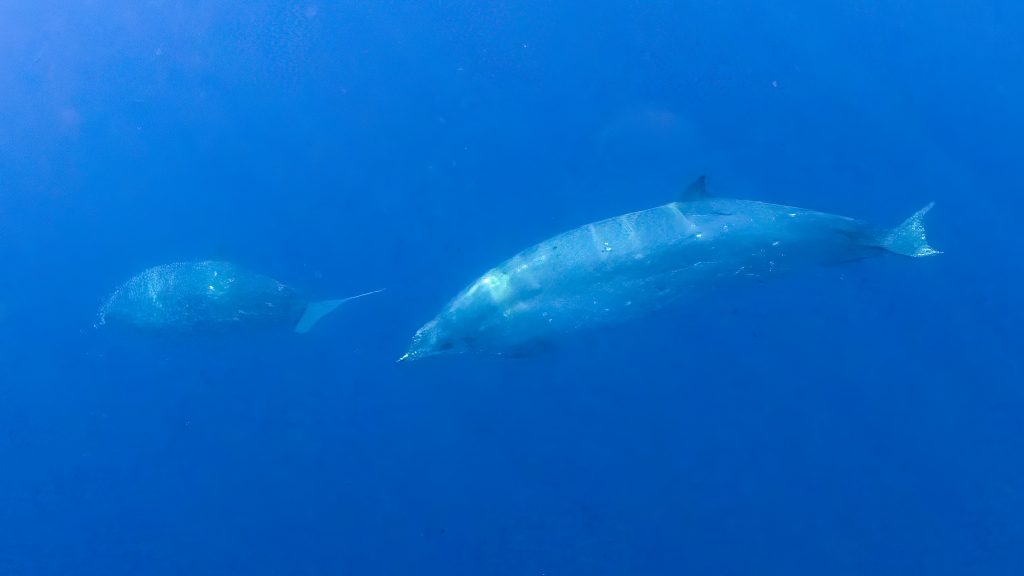
Photo by Simon Ager of the Sea Shepherd Conservation Society
Upon graduation from UABCS Gustavo started working with the Marine Mammal Research Group of the National Institute of Ecology, which became part of CONANP in 2018. He also began work on his Ph.D. at the Centro de Investigación Científica y de Educación Superior, CICESE. Through his work he connected with the Sea Shepherd Conservation Society (SSCS), which has been working for the last several years to protect the critically endangered vaquita porpoise in the upper Gulf of California. In October 2020 Gustavo and his colleagues engineered a 5-year agreement between CONANP and SSCS in which SSCS would provide boat time, equipment and scientific manpower to help CONANP monitor whales in Mexico’s natural protected areas. They did two expeditions to Guadalupe Island to study Cuvier’s beaked whales, then in November 2020 started their third voyage as a team aboard Sea Shepherd’s vessel the Martin Sheen. Their goal was to see if they could finally get a visual and/or acoustic match for those BW43 signals recorded in 2018 to determine if they really did belong to Perrin’s beaked whales.
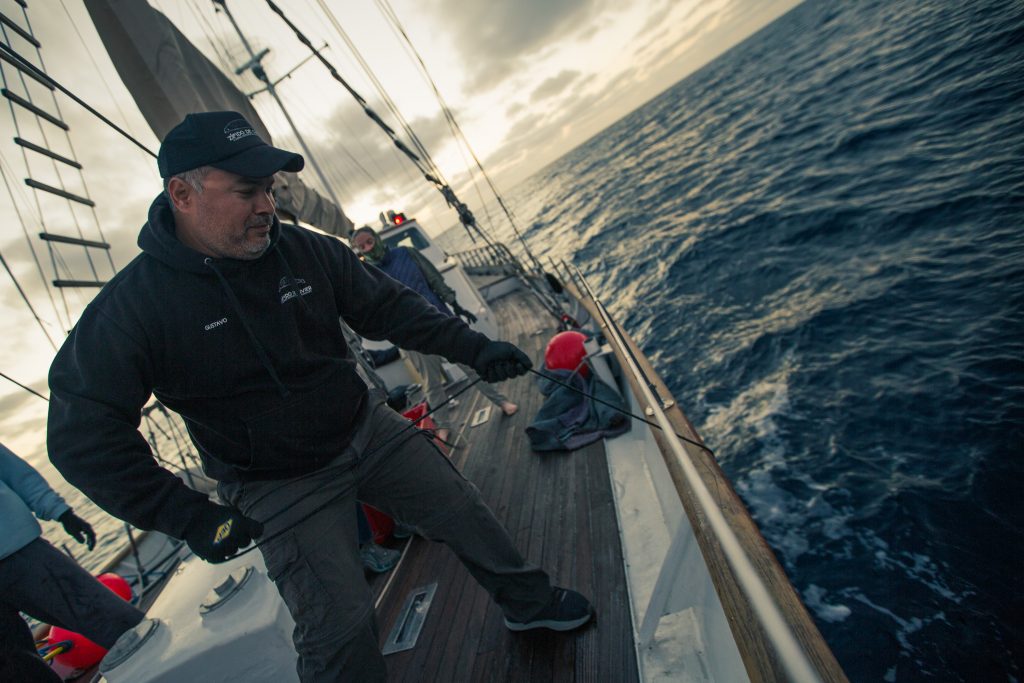
Photo courtesy of Sea Shepherd/CONANP.
“It was 6:15 AM on November 17, the third day of the expedition, and we were about 100 miles north of the San Benito islands off the coast of Baja when we started seeing marine mammals close to the boat” recalls Gustavo. “It was three individuals and because of their size and their apparent ease at being around the ship, at first we thought they were dolphins. But we started taking photos and deployed a specialized underwater microphone to record their acoustic signals. It was then that we realized that they were beaked whales and it was really amazing because beaked whales almost never come close to ships, and these guys were actually investigating the boat with a great deal of curiosity. It was just incredible.”
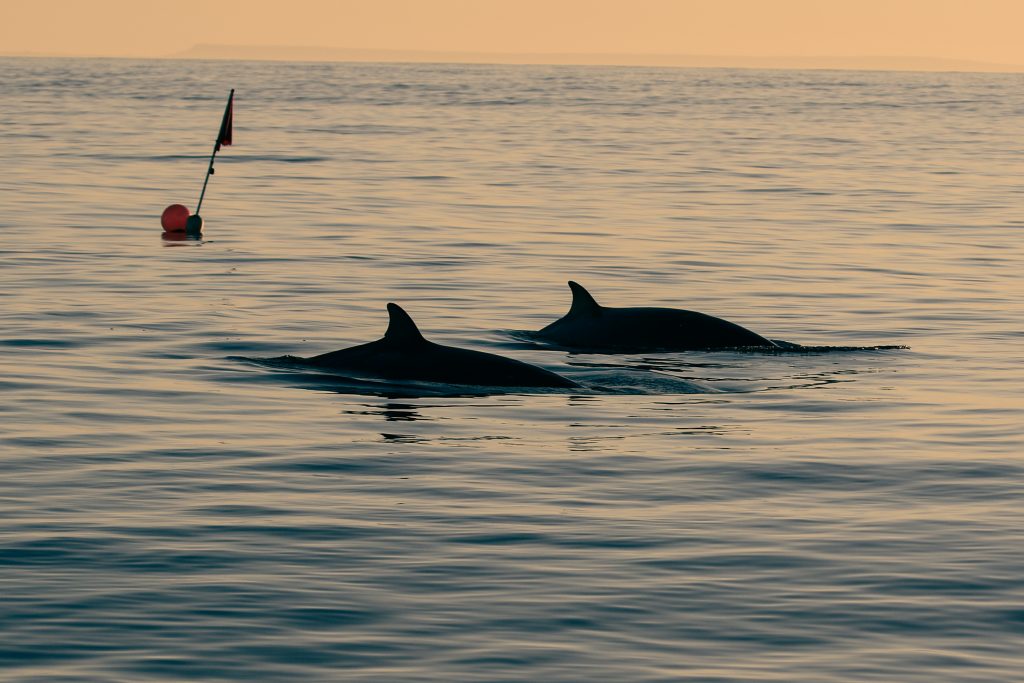
Photo courtesy of Sea Shepherd/CONANP
More incredible than he could have imagined in fact. “Of course, we all thought that we’d finally found the elusive Perrin’s beaked whale which was amazing enough as one has never been spotted alive. But then we started analyzing the photos and realized that the morphology of these whales was quite different from that of the Perrin’s. One of the beaked whales that we saw was a male, which means that it had teeth in the lower jaw that we could compare to other species. And its teeth were in an entirely different location from those of the Perrin’s. The Perrin’s beaked whale has teeth right at the end of its jaw, while this whale had teeth much further back. Moreover, the acoustic signal we recorded is not BW43. In fact, it is not a sound previously known to science. Add in the fact that there were differences in skin color and size and we realized that not only were these whales not Perrin’s, they were most likely an entirely new species!”
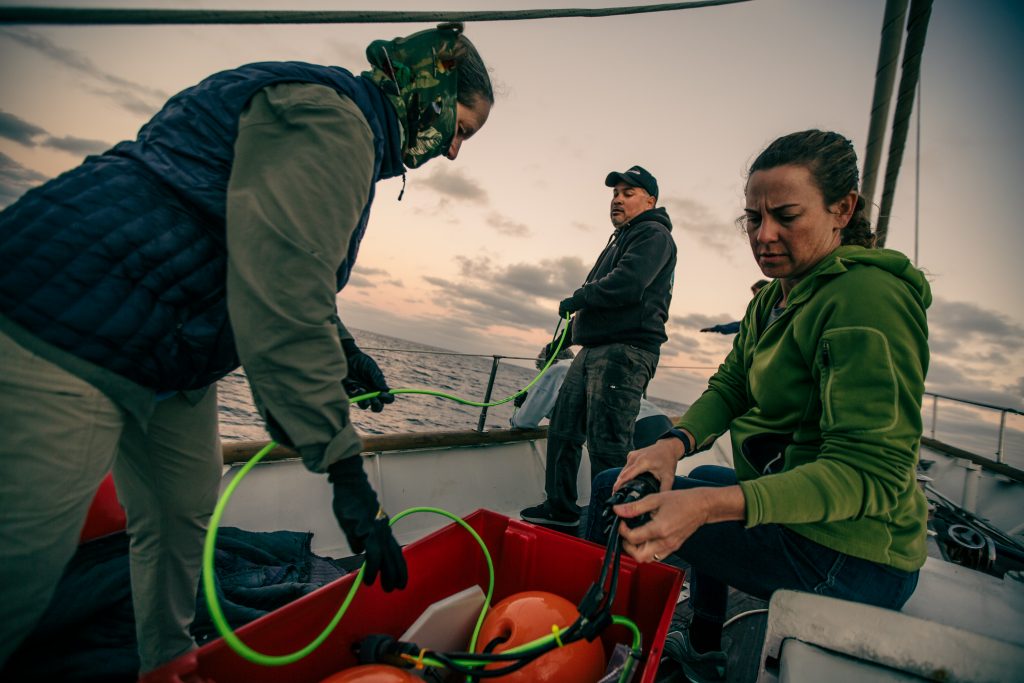
Gustovo and the science team carefully storing the cable and removing the recorder from the array
Photo courtesy of Sea Shepherd/CONANP
“We didn’t see any other beaked whales for the remaining two weeks of that expedition” continues Gustavo, “but we did take water samples from the area where we saw the whales and our hope is that there will be some genetic material like sloughed skin that will allow us to analyze the whale’s DNA to determine if they are definitely a new species. But we feel pretty confident that it is.”
So for Gustavo Cárdenas Hinojosa 2020 was definitely a banner year. Not only did he discover a potentially new whale species, he successfully defended his Ph.D. thesis less than a month later and is now, according to the Sea Shepherd web site, “renowned beaked whale researcher, Dr. Gustavo Cárdenas Hinojosa.” But it was still 2020 after all and the genetic testing lab at the National Oceanic and Atmospheric Association (NOAA) – which also had a scientist on the expedition – was closed due to the global pandemic. So Gustavo and his colleagues are just having to cool their heels until the pandemic releases its grip long enough to allow the lab to reopen and test the water samples to see if they have really discovered a new species. When will that be? It’s anybody’s guess, but the potential discovery of Gustavo and his team has given a weary world a happy reminder that the earth still has joyful mysteries to share, that local boys from small towns can still make huge contributions to science, and that in Baja, right when we need them the most, the whales can still be relied upon to appear to fill us with wonder and inspire us with their 50 million years of sustainably inhabiting the earth. It’s almost enough to make you consider 2020 in a new light. Almost.
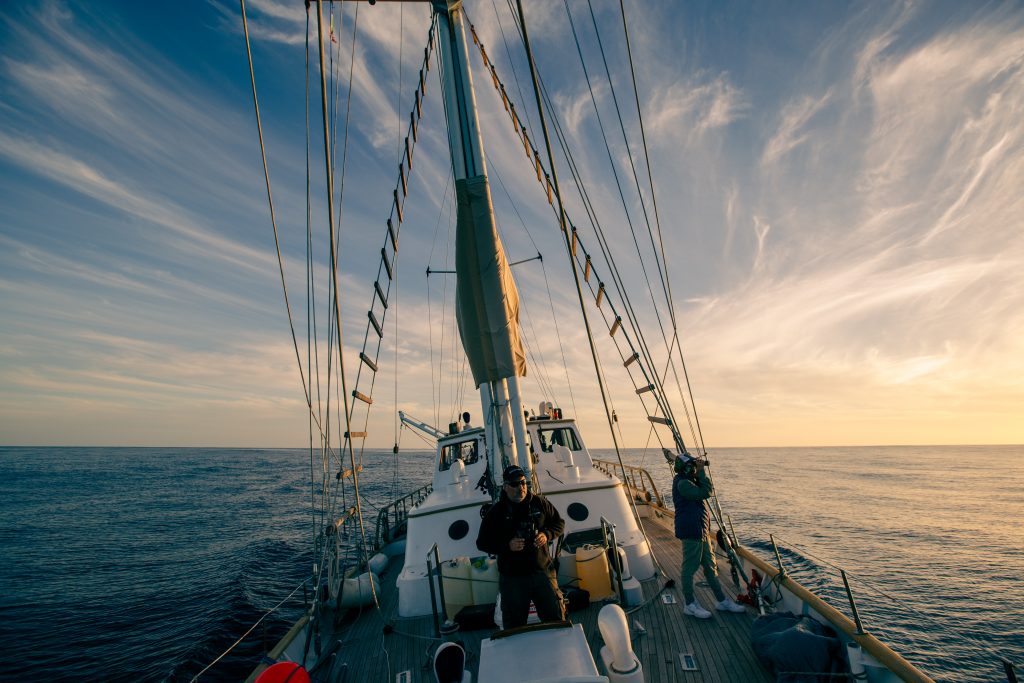
Photo courtesy of Sea Shepherd/CONANP
